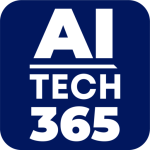2023 Efficiency Report highlights the need for IT budget increases and technology investments to boost efficiency long-term
More than half of business leaders believe their organization will not survive a recession without the work they are putting into digital transformation in 2023
Wrike, a leading work management platform, released the results of a comprehensive new study, the 2023 Efficiency Report, which evaluates how organizations manage challenges and opportunities in the current economic climate and harness efficiency in the workplace. While reduced budgets and staff numbers have impacted many organizations, the study found that tech stack consolidation and new technologies that leverage AI are the most effective measures to improve efficiency and reduce workplace stress when done holistically and strategically.
“This means they can manage their workload and the expectations of different stakeholders and ensure delivery deadlines are met. Not only does this help improve their work, but it also reduces burnout of staff.”
Wrike partnered with Sapio Research to survey over 1,000 business leaders and 2,000 knowledge workers across the UK and the US to understand how recent efficiency measures impacted the workforce and which contributed most to organizational success. Here are the key discoveries from the report.
Economic Uncertainty Triggers Major Rearrangements in Corporate Planning
Following a period of “growth at all costs” during the pandemic, organizations now face a challenging economic climate. The International Monetary Fund’s latest World Economic Outlook report states that growth is expected to fall from 3.4% in 2022 to 2.8% in 2023. The decline in economic growth has more than three-quarters (77%) of organizations prioritizing efficiency, with 52% of business leaders stating their organization won’t survive a recession without efficiency measures.
The Effects of Efficiency Measures On Employees
According to knowledge workers, the top three ways the current economic climate impacted their organizations’ business decisions include reducing budgets (34%), increasing prices (33%), and reducing staff numbers (29%). As a result, workloads have increased by 45%, and employee burnout topped 70%. While these efficiency measures provide a short-term solution, on their own, they do not set an organization up for success long-term and can have a negative impact on the workforce if not done in conjunction with other efficiency measures. That’s why organizations are also looking to upskill employees, invest in new software applications, and reduce meeting time, among other approaches.
According to business leaders and knowledge workers, the most effective ways to improve efficiency include investing in new project management and work management solutions, upskilling employees, and consolidating software applications.
What’s Impacting Efficiency
Organizations are taking these steps to overcome the leading causes of inefficiencies, which include poor communication and collaboration, time wasted on activities like meetings and duplicative work, and poorly designed or outdated processes. These inefficiencies were triggered by modern work complexities, which were brought about by application proliferation from hybrid and remote work. While the study found that the number of applications used at work has decreased by 50%, teams still don’t have visibility into 42-45% of work taking place. This may be caused by a lack of application integrations, with knowledge workers citing the use of redundant solutions (51%) and the need to consolidate applications even further (58%). A more strategic approach to tech stack consolidation and integrations is necessary.
The Future is Bright with Consolidation and AI
Organizations prioritizing efficiency have started investing in new technologies and accelerating digital transformation. Despite recent cutbacks, many organizations predict IT budget increases, focusing on work management software to streamline workloads and reduce the Dark Matter of Work, or work that gets lost between siloed applications and teams.
According to three-quarters (76%) of knowledge workers, a single source of truth would help them reduce work-related stress. Additionally, 80% state that it would improve efficiency, and 62% of business leaders say, “If my organization used one collaborative work management platform as a single source of truth for work, we would be able to deliver business outcomes faster.”
The report also highlights AI’s crucial role in driving efficiency improvements. AI and machine learning technologies, when integrated into key software platforms, can automate workflows, reduce manual tasks, and effectively manage the increasing complexity of work. With almost 9 in 10 business leaders planning to use AI to boost efficiency, incorporating AI into work management solutions is vital for combating inefficiencies and ensuring employee success.
“In an era where efficiency reigns supreme, our research illuminates the stark need for strategic digital transformations to unlock increased productivity and decrease workplace stress,” says Thomas Scott, Interim CEO, Wrike. “Our report underlines the gravitas of moving beyond band-aid solutions to address inefficiencies that could cost organizations millions from a lack of visibility and alignment, wasted resources, and employee burnout. With robust consolidation efforts and leveraging advancements in AI, we aim to empower businesses in effectively managing complexities and improving their ROI, even amidst economic uncertainty.”
To help combat common causes of inefficiencies, Wrike recently introduced Wrike Integrate Lite – a new streamlined version of its robust integration platform to address the need for more integrations between applications. This curated tool is tailored for customers seeking swift and significant value and offers the benefits of Wrike Integrate with a few simple differences. Wrike Integrate Lite is cost-effective for budget-conscious teams. Additionally, customers have access to one pre-selected connector package with full functionality. This comprehensive package covers a CRM use case featuring connectors like Salesforce and HubSpot. Finally, Onboarding Assistance, free for up to two hours, ensures users get up to speed quickly, leveraging the platform’s recipe templates and instructional videos for standard automation use cases.
“With Wrike, we now have visibility into our team’s pipeline of work,” says Nancy Peaty, Production and Traffic Manager from the Division of External Relations, UNSW. “This means they can manage their workload and the expectations of different stakeholders and ensure delivery deadlines are met. Not only does this help improve their work, but it also reduces burnout of staff.”

